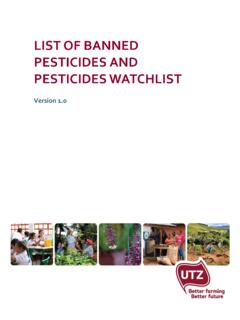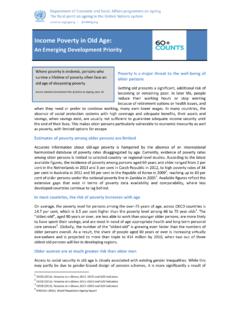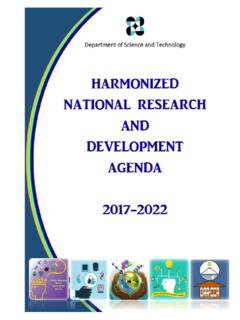Transcription of Positively Innovative R32 - DAIKIN Chem
1 Positively InnovativeR32 Instructions for Use and Handling RefRIgeRantsR3223 Foreword 41 Characteristics 5 Characteristics 5 Flammability 6 Saturated Vapor Pressure / Temperature Curves 7 Theoretical Characteristics of Refrigeration Cycle 8 Chemical Stability 8 Water Solubility 9 Desiccants 9 Effect on Polymeric Materials 10 Miscibility with Refrigeration Oils 112 Safety 113 Handling Precautions 12 Appendix 1. P-h Diagram 13 Appendix 2. Thermodynamic Properties (Saturation Table) 14/15 Contents4R32 is a chlorine-free, ozone-safe fluorocarbon whose boiling point is -52 is a component of R410a, a blend refrigerant widely used in developed coun-tries as a main alternative to HCfC-22, an ozone depleting refrigerant.
2 But R410a has a high global Warming Potential (hereafter, gWP) of 2088, so a new refrigerant with lower gWP is needed to mitigate climate has a gWP about one third that of R410a, and it has excellent properties as a refrigerant. therefore, the technology has been developed to use it by itself as an alternative refrigerant to replace in the air conditioning sector, it is difficult to select an alternative refrigerant although low-gWP substances such as natural refrigerants have been proposed, various problems have to be solved before they can be put into practical use.
3 On the other hand, R32 is an almost non-toxic, chemically stable substance and is readily available because it is a commercially manufactured product. R32 can be used with extension of existing technology because its pressure is similar to that of R410a, and it can provide excellent energy efficiency of the equipment. all these properties make R32 a promising choice for the as a single component refrigerant is attracting attention not only as an alter-native to R410a in developed countries but also as an alternative to HCfC-22 in developing using R32, however, applicable regulations and standards must be observed and results of risk assessment must be considered because it has slight flammability (Class 2L under refrigerant standards IsO/fDIs 817 and asHRae 34).
4 Foreword51 CharacteristicsProductR32R410 AHCFC-22 ComponentHFC-32 HFC-32/ HFC-125 HCFC-22 Chemical formulaCH2F2CH2F2/ CHF2CF3 CHClF2 Compositionmass%10050/50100 Molar point-136--160 Critical densitykg/m3424486515 Density Saturated liquidkg/m396110591191 Density Saturated Saturated liquidmPa Normal pressure vapormPa specific heat Saturated liquidkJ/kg specific heat Normal pressure vaporkJ/kg heat of vaporization (Boiling Point)kJ/kg382275233 Thermal conductivity Saturated liquidmW/m K1258787 Thermal conductivity Normal pressure vapormW/m K131311 Breakdown voltage Normal pressure constant Saturated concentration limitppm1000*21000*31000*4 Ozone depletion potential ODP CFC11= warming potential GWP *1CO2=167520881810 Solubility of watermassppm340016001300 Unless otherwise specified, the values in the above table are at 25 C.
5 *1 global Warming Potential: Based on IPCC 4th assessment Report 2007, integration time horizon 100 years. for blends, figures calculated on its basis.*2 WeeL-tWa value of aIHa (Workplace environmental exposure Level; time-Weighted average; american Industrial Hygiene association)*3 Calculated value based on the WeeL-tWa value of aIHa of each component.*4 tLV-tWa value of aCgIH (threshold limit value; association advancing Occupational and environmental Health). general Characteristics6R32R410 AHCFC-22 AmmoniaPropaneFlammability range (in Air)Lowerflammability limit(LFL) limit(UFL) ignition energy (MIE)mJ30 ~ 100--Not burning velocity (BV) of combustion (HOC)kJ/kg9,400--18,60045,700 ASHRAE standard 34 Class 2L(Slightly flammable)Class 1(Non-flammable)Class 1(Non-flammable)Class 2L(Slightly flammable)Class 3(Highlyflammable)ISO international standard 817 Class 2L(Slightly flammable)Class 1(Non-flammable)Class 1(Non-flammable)Class 2L(Slightly flammable)Class 3(Highly flammable)
6 GHS (Globally HarmonizedSystem of Classification andLabelling of Chemicals)MPaCategory 1(Extremelyflammable gas)Not ClassifiedNot ClassifiedCategory 1(Extremelyflammable gas)Category 1(Extremelyflammable gas) flammabilityR32 is flammable, but its flammability is extremely low compared with that of hydrocarbon refrigerants such as propane. therefore, R32 is positioned as a slightly flammable refrigerant. When using R32, applicable regulations and stan-dards must be observed and results of risk assessment must be Society of Heating,Refrigerating andAir-Conditioning Engineers,Inc.
7 (ASHRAE)International Organizationfor Standardization (ISO) united nations (UN)StandardASHRAE 34 - 2010 ISO/FDIS 817 2012 GHST hird Revised Edition 2009 ClassificationcriteriaClass 3 Highly flammableLFL kg / m3 orHOC 19,000 kJ / kgClass 3 Highly flammableLFL vol. % orHOC 19,000 kJ / kgCategory 1;Extremely flammable gasLFL 13 vol. % orUFL LFL 12 %Class 2 Low flammableLFL kg / m3 andHOC 19,000 kJ / kgClass 2 Low flammableLFL vol. % andHOC 19,000kJ / kgCategory 2;Flammable gasOther than thoseof Category 1,have a flammable rangeClass 2 LSlightly flammableBV 10 cm / secClass 2 LSlightly flammableBV 10 cm / secClass 1 Non-flammableNo flame propagationClass 1 Non-flammableNo flame propagation Not ClassifiedNo-range of flammabilityFlammability properties and Flammability classification by the applicable laws, regulations and standards(Reference)
8 Classification criteria for flammable gases on the applicable laws, regulations and saturated Vapor Pressure / temperature Curvesthe graph below shows the relationship between temperature and saturated vapor pressure of R32, in comparison with that of R410a and shown on the graph, R32 has similar vapor pressure to that of Vapor Pressure CurveSaturated pressure (MPa G) -50 -40 -30 -20 -10 0 10 20 30 40 50 60 70 Temperature CR32 R410A theoretical Characteristics of Refrigeration CycleR32 delivers superior performance in both cooling / heating capacity and energy efficiency compared with R410a, volumetric capacity of R32 is about 15% higher and its COP is about 6% higher (therefore, concerning the climate change issue.)
9 It can contribute to reduce the equipment s indirect impact on CO2 emission). But the discharge gas temperature of R32 is about 20 C higher, so this feature must be taken into consideration in equipment in evaporator Temperature C1068388 CoolingCOP * / m3481241503010 HeatingCOP * / m3656257644049evaporator temperature 0 CCondenser temperature 50 Csuperheat 0 Ksubcool 0 KCompressor efficiency 70% *1 Coefficient of Performance (Index of the energy efficiency). Chemical stabilitysubstances which affect the chemical stability of HfC refrigerants include refrigerant oils, coexistent metals, desiccants and contaminating air and moisture.
10 The data below were observed from sealed tube tests on R32 / polyol ester of R32 has almost the same tendency as that of R410a. RefrigerantTest Conditiondays CAcid Concentration* HCl, HFmassppmR32301751601754R410A30175260175 3 HCFC-223017596017535* acidic compounds are generated as a result of refrigerant Oil ratio =1/1(weight ratio) Coexisting metal rods (copper, iron and aluminum) R32, R410a/ester Oil, HCfC-22/Mineral OilSealed Tube Test Result 9 Molecular sieve*Pore size ( )Refrigerant / Molecular size ( )




